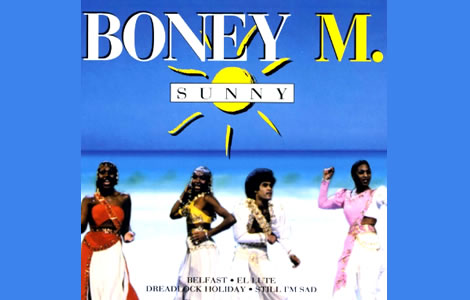
Boney M’s rendition of “Sunny” became an international sensation in 1977, breathing new life into a track that was originally a massive hit in 1966.

The group’s vibrant, disco-infused version of the song captured the spirit of the era, turning “Sunny” into one of the year’s defining anthems and solidifying Boney M’s status as one of the biggest acts in disco.
Origins and Success of the Cover
“Sunny,” originally written and performed by Bobby Hebb, was a soulful, jazz-influenced pop song that climbed the charts in 1966, reaching number two on the Billboard Hot 100.
Over a decade later, Boney M, a Euro-Caribbean group masterminded by German producer Frank Farian, reimagined the song with a disco twist. Their version of “Sunny” was part of the album Love for Sale, released in 1977.
The song quickly became a standout track, not just for its infectious rhythm but for the way it encapsulated the feel-good, carefree vibe that defined disco.
In the United States, “Sunny” by Boney M did well on the dance charts, reflecting the song’s popularity in nightclubs and on dance floors.
However, the song’s real success was in Europe. In the UK, it reached the top 3 on the charts, while in Germany, it became one of the year’s biggest hits, reflecting the group’s massive popularity in their home country.
The song also enjoyed significant airplay in France, Italy, and the Netherlands, cementing Boney M’s status as a disco powerhouse. In Australia, the track was similarly successful, charting in the top 10 and becoming a staple on radio stations and in clubs across the country.
Cultural Impact in 1977
The success of “Sunny” came during a time of vibrant cultural change in 1977. Disco music was at its peak, with acts like Boney M, the Bee Gees, and Donna Summer dominating the airwaves.
The disco craze wasn’t just about music; it was a lifestyle that influenced fashion, dance, and even television. Flamboyant outfits, platform shoes, and glittering accessories became the norm as people embraced the flashy, fun-loving spirit of the era.
In the United States, one of the most popular TV shows in 1977 was Happy Days, a nostalgic look at life in the 1950s.
The show’s influence was so strong that it sparked a retro craze, with leather jackets and poodle skirts making a brief comeback.
Meanwhile, in the UK, The Benny Hill Show was a major television hit, combining slapstick comedy with musical performances that often featured the latest pop hits, including tracks like “Sunny.”
Advertising also mirrored the cultural zeitgeist. In the United States, the “Coke Is It!” campaign was one of the most recognizable, promoting Coca-Cola as the ultimate beverage choice in a series of upbeat, feel-good commercials that featured catchy jingles and vibrant imagery.
In the UK, the “Beanz Meanz Heinz” campaign for Heinz baked beans was an iconic presence on television, with its catchy slogan and simple, relatable ads that made the product a staple in British households.
Fashions and Crazes of the Time
1977 was a year marked by bold fashion choices. The disco scene brought with it an explosion of colour and sparkle, with people donning bell-bottoms, sequined dresses, and wide-collared shirts.
This was also the era of the leisure suit, a casual yet stylish outfit that became synonymous with the laid-back, party-centric culture of the time.
Meanwhile, in the UK, the punk movement was gaining momentum, offering a stark contrast to the glitz and glamour of disco. Punk fashion was characterised by ripped clothing, safety pins, and DIY accessories, reflecting the rebellious spirit of the movement.
In addition to fashion, 1977 saw the rise of several notable crazes. In the United States, the fitness trend was booming, with aerobics and jogging becoming popular ways to stay in shape.
This was reflected in the fashion world, where tracksuits and running shoes became everyday wear, even for those who weren’t particularly sporty.
Meanwhile, in the UK, the craze for CB radio took off, with people across the country adopting the trucker-style communication tool as a fun and trendy way to chat with friends and strangers alike.
Legacy of Boney M’s “Sunny”
Boney M’s “Sunny” remains a quintessential disco track, a song that not only encapsulates the energy and optimism of 1977 but also serves as a reminder of the global reach of the disco phenomenon.
The group’s infectious energy, combined with the timeless appeal of the original track, ensured that “Sunny” would be remembered long after the disco era had faded.
The song continues to enjoy significant radio airplay around the world, a testament to its enduring appeal.
Whether played in its original form or in one of the many remixes that have been produced over the years, “Sunny” remains a feel-good anthem that transcends generations, a reminder of a time when the world danced to the rhythm of disco.
